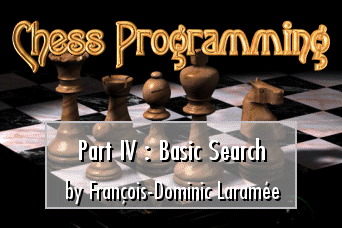11/10 - 11/12 @ Montréal, Canada
12/5 - 12/7 @ Shanghai, China
12/24 - 12/27
2/28 - 3/4 @ San Francisco, CA
More events...
2406 articles in the reference section.
Help us fight cancer!
Join SETI Team GDNet!

|
Iterative Deepening AlphaBetaIf you are searching a position to depth 6, the ideal move ordering would be the one yielded by a prior search of the same position to the same depth. Since that is obviously impossible, how about using the results of a shallower search, say of depth 5? This is the idea behind iterative deepening: begin by searching all moves arising from the position to depth 2, use the scores to reorder the moves, search again to depth 3, reorder, etc., until you have reached the appropriate depth. This technique flies in the face of common sense: a tremendous amount of effort is duplicated, possibly 8-10 times or more. Or is it? Consider the size of a search tree of depth d with branching factor B. The tree has B nodes at depth 1, B*B at depth 2, B*B*B at depth 3, etc. Therefore, searching to depth (d-1) yields a tree B times smaller than searching to depth d! If B is large (and remember that it is about 35 during the middle game in chess), the overwhelming majority of the effort expended during search is devoted to the very last ply. Duplicating a search to depth (d-1) is a trifling matter: in fact, even if it yielded no advantages whatsoever, iterative deepening would only cost less than 4% extra effort on a typical chess position! However, the advantages are there, and they are enormous: using the results of a shallower search to order the moves prior to a deeper one produces a spectacular increase in the cutoff rate. Therefore, IDAB actually examines far fewer nodes, on average, than a straight AB search to the same depth using any other technique for move ordering! When a transposition table enters the equation, the gain is even more impressive: the extra work performed to duplicate the shallow parts of the search drops to nothing because the results are already stored in the table and need not be computed again.
|
|
|
|
|